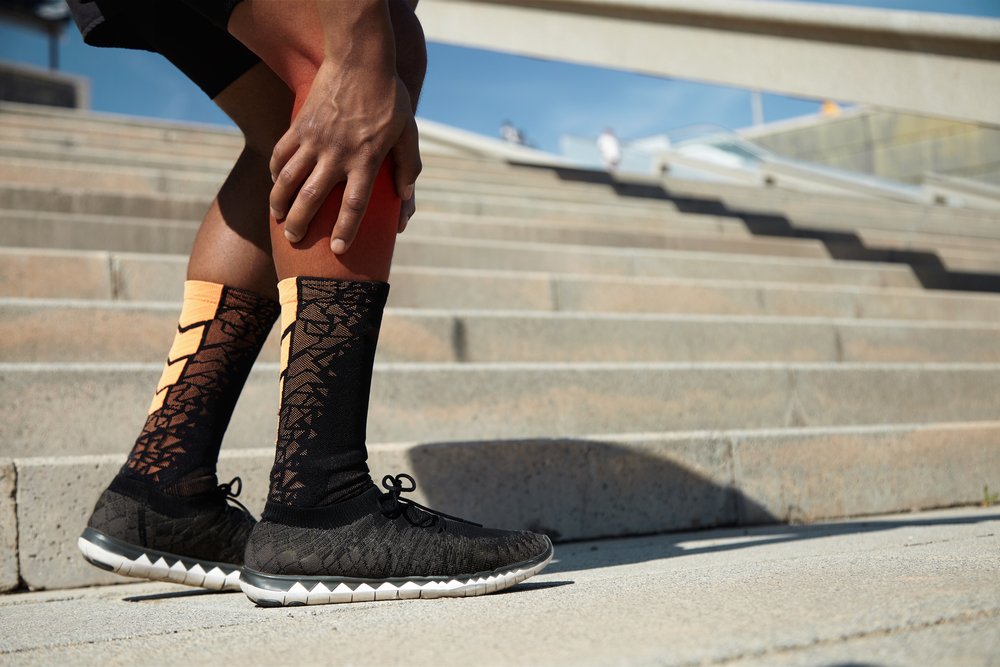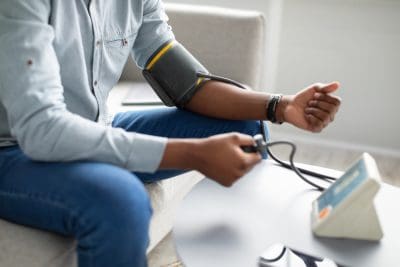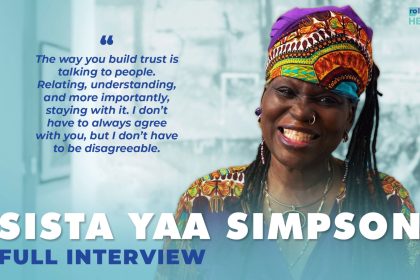You drag yourself out of bed the morning after a tough workout, wincing as your muscles protest with every movement. That familiar ache – sometimes a gentle reminder of yesterday’s efforts, sometimes so intense you wonder if stairs will ever be possible again – has become the gold standard for measuring workout effectiveness. “No pain, no gain” isn’t just a catchy phrase, it’s practically fitness gospel for many.
But what if everything you’ve been told about post-workout soreness is only partially true? That muscle pain might be telling you something completely different than what fitness culture has led you to believe. Understanding what’s actually happening in your aching body could transform how you approach fitness and recovery – and possibly deliver better results with less suffering.
The microscopic drama playing out in your muscles
That soreness you’re feeling has a scientific name – delayed onset muscle soreness, or DOMS. It typically appears 12-24 hours after exercise, peaks around the 48-hour mark, and can linger for up to a week in extreme cases. But the underlying process is far more complex than most people realize.
When you challenge your muscles with unfamiliar movements or intensities, you create microscopic tears in muscle fibers. This controlled damage isn’t harmful – it’s actually part of the adaptation process. Your body responds by launching a sophisticated repair operation, rebuilding those fibers slightly stronger and more resilient than before.
The soreness itself comes primarily from inflammation, not the initial tears. Your immune system sends specialized cells to the damaged area, triggering swelling and sensitizing nearby pain receptors. This inflammatory response is crucial for proper healing, but it’s also responsible for that can’t-sit-down-without-groaning feeling.
What makes this process particularly interesting is that it doesn’t always correlate with the effectiveness of your workout. Some highly productive training sessions might leave you minimally sore, while others might create significant discomfort without proportional benefits. Understanding this disconnection is key to interpreting what your soreness actually means.
Why beginners feel the burn most intensely
If you’ve ever started a new workout program and found yourself barely able to move for days afterward, while your more experienced friend seems barely affected, you’ve witnessed a fascinating aspect of muscle adaptation called the repeated bout effect.
The first time you perform an unfamiliar movement or intensity level, your muscles experience maximum damage because they haven’t adapted to that specific stress. Your body essentially overreacts, creating more inflammation and soreness than necessary because it doesn’t yet know how to efficiently respond to this new challenge.
After just a few sessions, though, your neuromuscular system adapts remarkably quickly. Your brain improves its communication with your muscles, distributing force more efficiently. Your muscle fibers develop better structural integrity, and your immune system responds more precisely, creating less collateral inflammation.
This adaptation explains why experienced weightlifters or runners often experience minimal soreness from workouts that would leave beginners hobbling for days. Their bodies have developed specifically to handle those stresses more efficiently – not because they’re working less hard, but because their systems have optimized the response.
The practical takeaway? Intense soreness often signals novelty more than effectiveness. If you’re constantly pursuing maximum muscle pain as a marker of a good workout, you might actually be program-hopping too frequently, never allowing those beneficial adaptations to develop fully.
The eccentric truth nobody told you
Not all muscle contractions are created equal when it comes to creating soreness. The type of movement that produces the most significant DOMS is eccentric contraction – when a muscle lengthens under tension, essentially working as a brake to control movement.
Walking downhill, lowering a weight, or the downward phase of a squat all involve eccentric loading. These movements create more microscopic damage than their concentric counterparts (shortening under tension) because fewer muscle fibers handle greater force during these lengthening contractions.
This explains the seemingly strange phenomenon where walking downhill leaves you more sore than walking uphill, despite feeling less cardiovascularly challenging. The same principle applies to resistance training – the lowering phase typically creates more soreness than the lifting phase, even though it often feels easier in the moment.
Understanding this mechanical reality helps explain why certain workouts leave you particularly sore. Those challenging yoga flows with slow, controlled movements? They’re eccentric-heavy, explaining the surprising next-day soreness. The same goes for focus on lowering weights slowly or emphasized negative repetitions in strength training.
When soreness lies about your progress
The most dangerous misconception in fitness might be the persistent belief that soreness equals progress. This pain-equals-results mindset leads many people to chase increasingly crippling workouts while potentially undermining their actual fitness goals.
As your body adapts to a well-designed training program, you should experience less soreness from workouts of similar intensity – not because you’re getting less benefit, but because your body is becoming more efficient at handling that stress and recovering. This adaptation represents progress, not a sign you need to demolish yourself further.
Strength gains, endurance improvements, and body composition changes can all continue long after soreness diminishes. Many elite athletes follow precisely programmed training that rarely leaves them significantly sore because maximum recovery allows for consistent, high-quality training – the actual driver of results.
Perhaps most importantly, research has demonstrated that muscle growth and strength development don’t correlate directly with soreness levels. Some effective muscle-building protocols create minimal discomfort, while certain types of training can produce significant soreness with relatively little hypertrophy stimulus.
The recovery window most people completely miss
The 48-hour period after a challenging workout represents a critical window where muscle protein synthesis – the process of building new muscle tissue – is elevated. How you support this process nutritionally and through recovery practices significantly impacts both your results and your soreness levels.
Protein timing and total intake play crucial roles in this recovery window. Your muscles need adequate amino acids available to rebuild efficiently, with current recommendations suggesting 1.6-2.2g of protein per kilogram of bodyweight daily for those engaged in regular resistance training. Distributing this protein across meals throughout the day appears more beneficial than consuming it all at once.
Hydration status dramatically affects both recovery and soreness perception. Dehydration can intensify DOMS symptoms while slowing the removal of inflammatory byproducts. Many people underestimate how much fluid they need after intense training, particularly when workouts involve significant sweating.
Sleep quality represents perhaps the most overlooked recovery factor. During deep sleep stages, growth hormone secretion peaks, accelerating tissue repair and adaptation. Poor sleep not only impairs this process but also lowers pain thresholds, making the same level of inflammation feel more intense subjectively.
The soreness-chasing trap that stalls progress
For some fitness enthusiasts, soreness becomes almost addictive – a tangible reward signaling virtue and effort. This psychological association can lead to problematic training patterns that ultimately undermine progress.
Program-hopping – constantly switching workouts to maintain maximum soreness – prevents the beneficial adaptations that come from consistent training. While variety has its place in preventing plateaus, constantly pursuing novelty for soreness’ sake typically produces inferior results compared to strategic progression on core movements.
Inadequate recovery between sessions represents another common pitfall. Training the same muscle groups while still significantly sore from previous workouts can impair performance and potentially increase injury risk. This decreased training quality often delivers less stimulus for adaptation than fully recovered, high-quality sessions would provide.
Perhaps most concerning is when soreness-seeking leads to ignoring pain signals that indicate potential injury. DOMS typically produces a dull, symmetric ache that gradually improves, while sharp, asymmetric, or persistent pain often signals something requiring medical attention. Learning to distinguish between productive soreness and warning signs is crucial for sustainable fitness.
Finding the sweet spot between comfort and growth
The optimal approach to training seeks the middle path between insufficient stimulus and excessive breakdown. This balanced approach typically produces moderate, manageable soreness while maximizing results and sustainability.
Progressive overload – gradually increasing demands through weight, volume, or intensity – represents the most reliable path to continued adaptation without excessive soreness. This methodical progression allows your recovery capacity to develop alongside your performance capabilities.
Strategic deloads – planned periods of reduced training intensity – allow accumulated fatigue to dissipate before it impacts performance or injury risk. These recovery-focused phases typically reduce soreness while setting the stage for subsequent progress when normal training resumes.
Perhaps most importantly, personalizing your approach based on individual recovery capacity yields better results than following arbitrary standards. Some people naturally recover faster than others due to genetics, age, sleep quality, stress levels, and nutritional status. Learning your personal patterns allows you to optimize training frequency and intensity for your unique physiology.
That post-workout soreness tells a complex story about novelty, movement patterns, recovery status, and individual physiology – not simply workout quality or effectiveness. By understanding what muscle pain actually signals, you can make better training decisions that maximize results while minimizing unnecessary suffering. The most successful fitness journeys typically involve just enough discomfort to drive adaptation without creating the excessive breakdown that impairs consistency and progress.
















